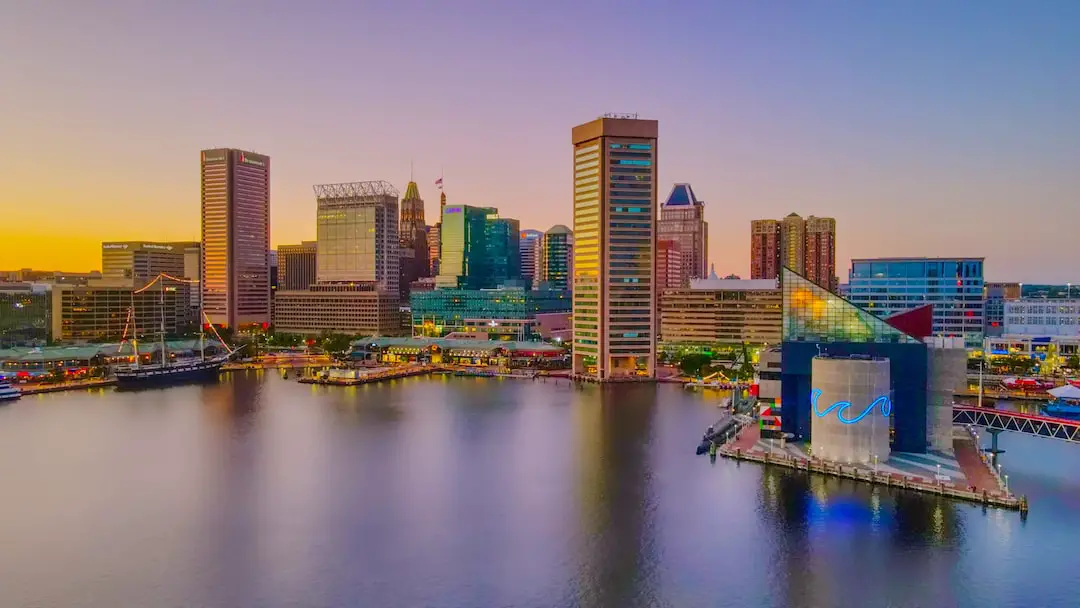
Baltimore, Maryland, a city with a rich history that’s as varied and vibrant as the architectural tapestry that adorns its streets. From the cobblestone charm of Fells Point to the imposing grandeur of Mount Vernon, the city’s buildings tell a story of evolution, resilience, and innovation. Let’s take a stroll down memory lane and explore how Baltimore’s architecture has morphed from its colonial roots to the modern skyline we recognize today.
The Colonial Foundations
It all began in the 18th century when Baltimore was just a fledgling port town. The Georgian style dominated the scene, with its symmetrical facades and brick construction reflecting the city’s British colonial heritage. We can still catch glimpses of this era in the preserved homes of Federal Hill, where the past lingers like the scent of old books.
Industrial Revolution and Beaux-Arts Beauty
Fast forward to the 19th century, and you’ll find Baltimore at the heart of the Industrial Revolution. The city’s architecture took a turn towards the grandiose, with Beaux-Arts buildings that seemed to shout their opulence from the rooftops. The Baltimore city Hall, a masterpiece of this era, stands as a testament to the city’s burgeoning wealth and its taste for the ornate.
The Charm of Row Houses
But let’s not forget the humble row house, an icon of Baltimore’s residential design. These brick beauties, often adorned with white marble steps, stretch in unbroken lines through neighborhoods like Canton and Charles Village. They’re a nod to the city’s working-class roots, practical yet full of character.
Art Deco and the Roaring Twenties
As jazz filled the air in the 1920s, Baltimore’s architecture got a jazzy twist of its own. Art Deco buildings, with their geometric shapes and streamlined forms, started popping up. The Lord Baltimore Hotel is a prime example, with its sleek lines and gilded details that seem to dance to the rhythm of that bygone era.
Mid-Century Modernism and Beyond
After World War Ii, Baltimore embraced modernism. The city’s skyline began to soar with buildings like the Mies Van der Rohe-designed Highfield House, showcasing simplicity and functionality. These structures reflected a new, forward-looking America, eager to shed the past and embrace a more streamlined future.
Preservation and Revitalization
But Baltimore’s architectural journey isn’t just about moving forward. It’s also about holding onto the threads of history. Efforts to preserve historic buildings have been robust, with projects like the restoration of the Hippodrome Theatre breathing new life into spaces that once seemed destined to crumble.
Contemporary Constructions
Today, Baltimore’s architecture is a melting pot of styles. Contemporary masterpieces like the glass-encased National Aquarium sit comfortably alongside 19th-century markets. It’s a city that respects its past while boldly stepping into the future, a place where history and modernity are in constant, harmonious dialogue.
FAQs
- What is the most iconic example of Baltimore’s architecture?
The Baltimore Basilica, America’s first cathedral, is a shining example of neoclassical architecture and a must-see for any architecture enthusiast.
- Can you visit historic homes in Baltimore?
Absolutely! Many of Baltimore’s historic homes are open to the public, offering a peek into the city’s architectural past.
- How has Baltimore’s architecture influenced its culture?
Baltimore’s diverse architecture has fostered a unique cultural identity, one that celebrates both tradition and innovation.
Conclusion
In conclusion, Baltimore’s architecture is a rich tapestry that weaves together stories of history, culture, and innovation. From the colonial homes of its early days to the sleek modernist structures that punctuate its skyline, the city’s buildings are as diverse as its people. As we’ve explored the evolution of Baltimore’s architecture, it’s clear that each era has left its indelible mark, contributing to the unique character of Charm City. Whether you’re a real estate investor, a homeowner, or simply a lover of beautiful buildings, Baltimore’s architectural landscape offers a fascinating journey through time, one that continues to evolve and inspire.
For those seeking to understand or invest in Baltimore’s real estate, appreciating the city’s architectural heritage is key. It’s not just about the bricks and mortar; it’s about the stories these structures tell and the future chapters they’re yet to write. So, next time you’re in Baltimore, take a moment to look up and around. You’ll see a city that’s proud of its past and excited for its future, all reflected in the architecture that lines its storied streets.